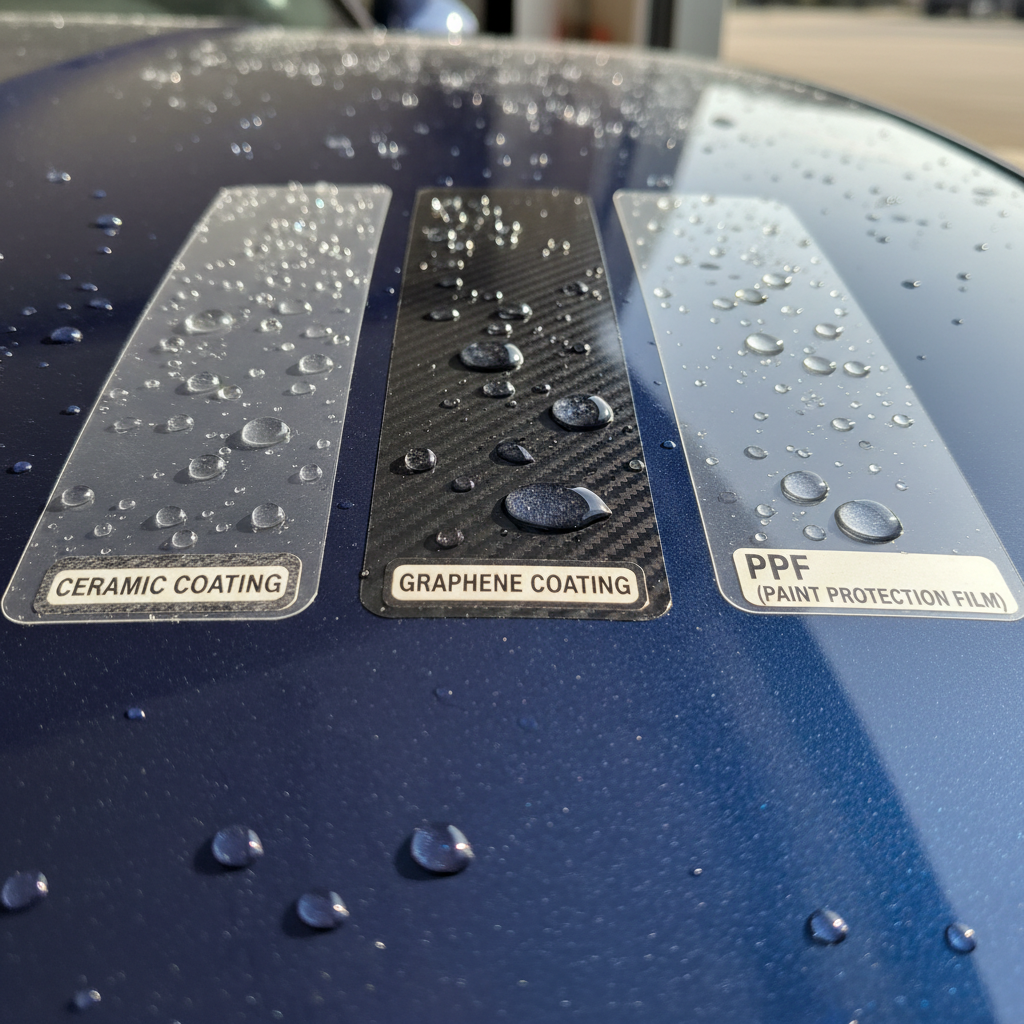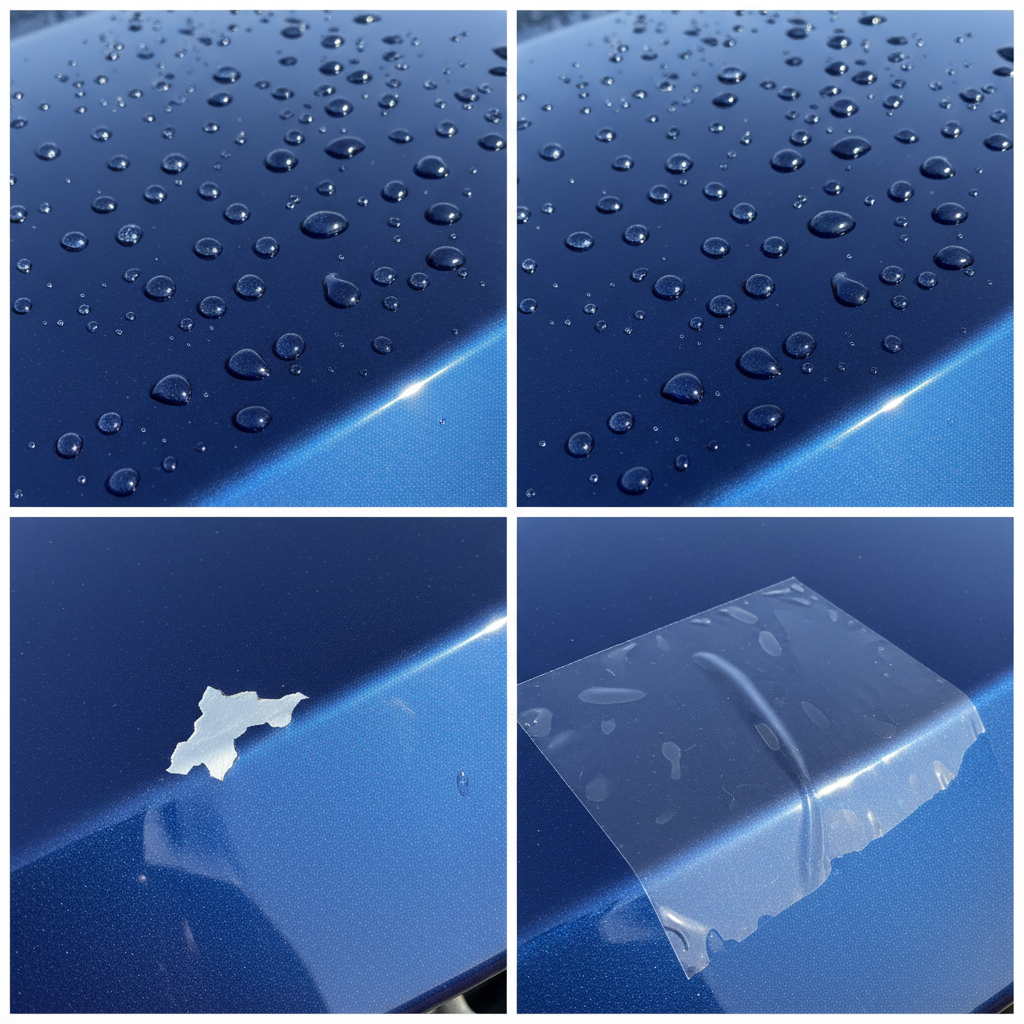2025 Showdown: Ceramic, Graphene, or PPF? The Real Data Behind What’s Protecting Cars (And Wallets) Right Now
It’s not your imagination: the world of automotive paint protection in 2025 is more crowded—and confusing—than ever. Ceramic coatings, graphene-infused ceramics, and paint protection film (PPF) are all fighting for the top spot in your detailing budget. But which tech actually delivers the best results for your car, your climate, and your wallet? Forget the hype—let’s break down the latest lab tests, real-world reviews, and pricing so you can invest smartly and avoid buyer’s remorse.
Contents
- 1 Who’s Who: The Big Three Paint Protection Players in 2025
- 2 How They Stack Up: 2025’s Hard Numbers and Head-to-Head Tests
- 3 What’s Real—and What’s Hype—in 2025?
- 4 Price Check: What Are You Really Paying for Protection?
- 5 Action Steps: How to Choose the Right Paint Protection in 2025
- 6 The 2025 Takeaway: Choose the Protection That Fits Your Reality
Who’s Who: The Big Three Paint Protection Players in 2025
Ceramic coatings have been the gold standard for years, offering semi-permanent protection, slick hydrophobic surfaces, and a big boost in gloss. In 2024–2025, standout products include Chemical Guys Carbon Force ($79, DIY, 2-year rating), Gtechniq Crystal Serum Ultra ($180, pro application, 5–7 year durability), and the new tech leader Ceramic Pro ION (pro-only, $1,400+ full car, 10-year warranty)[2][4].
Graphene coatings promised the next leap—less water-spotting, better chemical resistance, and longer life. Top models: Adam’s Graphene Ceramic Coating Advanced ($99, DIY, 5-year claim) and Ethos Graphene Matrix ($99, DIY, 5-year claim). But are they truly better, or just marketing hype?

Paint Protection Film (PPF) is the old-school heavyweight. Modern self-healing films like XPEL Ultimate Plus and Suntek Reaction are thicker and more invisible than ever. But at $2,000–$6,000+ professionally installed, is it overkill for daily drivers?
How They Stack Up: 2025’s Hard Numbers and Head-to-Head Tests
Durability and Longevity
- Ceramic coatings (premium): 2–7 years, depending on formula and maintenance. Ceramic Pro ION leads with a real-world 10-year warranty[2].
- Graphene-infused coatings: Most claim 4–5 years, but recent user tests show many products degrade noticeably after 18–24 months[3]. The longevity advantage isn’t dramatic over ceramics for most drivers.
- PPF: 5–10 years with top films, and some offer transferable warranties. Key: PPF physically blocks chips—neither ceramic nor graphene does this[6].
Real-World Protection: What Do They Stop?
| Threat | Ceramic | Graphene | PPF |
|---|---|---|---|
| Minor scratches | ✓ (minor only) | ✓ (minor only) | ✓✓✓ (blocks chips & scratches) |
| UV fading | ✓✓ | ✓✓ | ✓✓✓ |
| Water spots | ✓ (can develop spots) | ✓✓ (resists spots) | ✓✓ |
| Bird droppings/Acidic fallout | ✓✓ | ✓✓ | ✓✓✓ |
| Gloss/shininess | ✓✓✓ | ✓✓✓ | ✓✓ |
Ease of Maintenance
- Ceramic and graphene coatings both reduce washing frequency and make cleaning easy. Graphene may edge out in resisting water spots and keeping surfaces slicker[1][2].
- PPF needs occasional cleaning and can be topped with a ceramic/graphene coating for best results. Scratches heal with warmth (sun or hot water), but heavy abrasions require professional attention.
What’s Real—and What’s Hype—in 2025?
Ceramic coatings are now a mature tech: their benefits and performance are well-documented. Products like Ceramic Pro ION (pro-only, $1,400–$2,500) have set new standards for hardness, depth of gloss, and lifespan—think 10-year protection with a warranty[2][4].
Graphene coatings, despite the buzz, are often just ceramic formulas with a dash of graphene oxide. While they may slightly outperform ceramics on water-spotting and ease of cleaning, independent tests and detailing pros report that the difference is modest, and product quality is inconsistent. Many top graphene coatings don’t dramatically outlast or outshine the latest ceramics[3]. Still, for DIYers, they offer tech appeal and a slicker feel for about the same price as ceramics.

PPF reigns supreme for physical protection. No coating—ceramic or graphene—can stop a rock chip; PPF can. For owners of new, high-value cars, or those with long highway commutes, PPF is worth its high cost. For others, it’s FOMO fuel unless you want bulletproof defense[6].
Trending Now: Combo Power
Detailers in 2025 recommend combining PPF and ceramic/graphene coatings. The film absorbs impacts; the coating on top adds water-beading, gloss, and easier cleaning. Yes, it’s double the price—but it’s also the ultimate flex (and resale booster) for car enthusiasts.
Price Check: What Are You Really Paying for Protection?
| Option | DIY Cost | Pro Installed | Typical Lifespan |
|---|---|---|---|
| Ceramic Coating | $75–$200 (kit) | $700–$2,500 | 2–7 years (ION: up to 10) |
| Graphene Coating | $90–$120 (kit) | $750–$2,800 | 2–5 years (claims up to 5) |
| PPF (Full Car) | n/a | $2,000–$6,000+ | 5–10 years |
Action Steps: How to Choose the Right Paint Protection in 2025
- Assess your needs: For daily drivers and leased vehicles, a good ceramic or graphene coating is the sweet spot for ease, looks, and cost. If you drive highways or want to maximize resale, get PPF on the front clip (hood, bumper, mirrors) plus a pro ceramic topcoat.
- Don’t fall for hype: Premium ceramics like Ceramic Pro ION offer proven, warrantied protection that outlasts almost all graphene formulas—and most graphene coatings are really ceramic at heart[2][3].
- DIY vs. Pro: DIY coatings save money but last half as long and are easy to mess up. Pro installs come with warranty and flawless finish, but watch for upcharges and installer quality.
- Budget smart: For the price of full-car PPF, you could re-coat with the best ceramic every 3 years for a decade. But for true impact and chip defense, PPF is the only game in town.
The 2025 Takeaway: Choose the Protection That Fits Your Reality
Ultimately, the best paint protection is the one that matches your car, your driving, and your desire for shine vs. safety. If you want gloss and easy care on a budget, go ceramic or graphene. If you want rock-solid defense (and have FOMO for every new ding), PPF—ideally topped with a pro ceramic coating—wins, if you can stomach the price. Don’t wait—detailing shops are seeing record demand for spring installs. Lock in your protection now before prices jump again!

Ready to upgrade? Call a certified detailer, ask about Ceramic Pro ION or Adam’s Graphene, and get on the calendar before your dream solution sells out.

